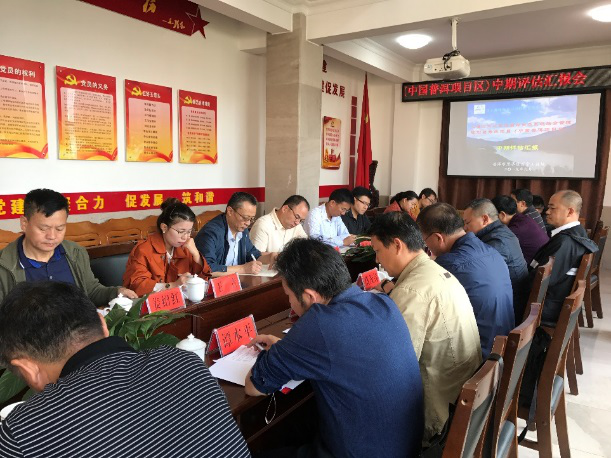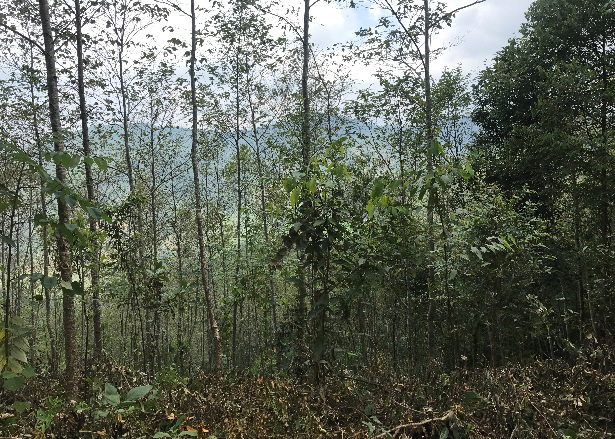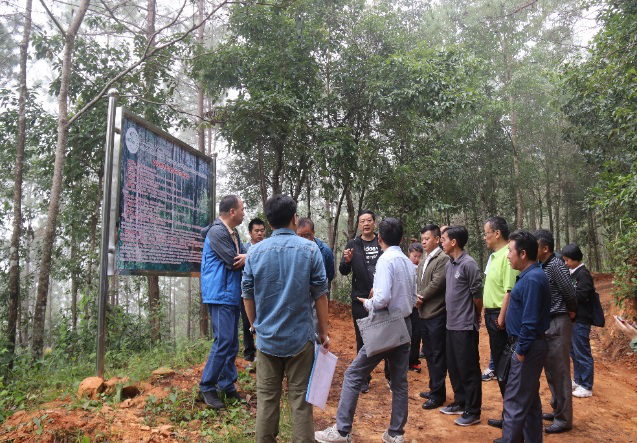Strengthening integrated sustainable forest management and planning in Pu’er China – positive feedback from the mid-term evaluation of the APFNet project
The Lancang–Mekong Watershed is one of the largest river systems in the world, spanning Cambodia, parts of China, Lao PDR, Myanmar, Thailand and Viet Nam. The watershed has abundant forest resources and rich biodiversity. However, the river basin faces significant deforestation and forest degradation due to a complex set of drivers. In order to enhance sustainable forest management in the Greater Mekong Subregion, APFNet initiated the project “Integrated Forest Ecosystem Management Planning and Demonstration Project in Greater Mekong Sub-region.” A network of site-specific demonstration sites along the Lancang–Mekong River has been established to showcase forest management models and test Forest Management Plans on the ground, assessing the extent they meet the socioeconomic and ecological goals of different types of forests.
As the first pilot sub-project for China, the Pu'er Project Site was initiated in the south of Yunnan Province, located on the upper reaches of the Mekong River – the biggest forest zone and a major timber production area in southwest China. For decades, conflicts between forest conservation and development have challenged policy-makers and practitioners in Pu’er. Overexploitation, combined with the lack of forest management planning and technical inadequacies have deteriorated the situation further. The critical role of forests for economic growth and ecological security in Yunnan and downstream economies has been significantly impacted as a result. The project was carried out by Wanzhangshan Forest Farm in 2017, with a five-year project duration. Total project funding was USD 1,094,022 of which USD 740,306 was provided by APFNet.
From 27–29 September 2019, during the middle of project implementation, a mid-term evaluation (MTE) of the project was carried out on the ground by an independent evaluation team, which aimed to check project performance and provide reasonable guidance and recommendations to the remaining project activities.
As the first pilot sub-project for China, the Pu'er Project Site was initiated in the south of Yunnan Province, located on the upper reaches of the Mekong River – the biggest forest zone and a major timber production area in southwest China. For decades, conflicts between forest conservation and development have challenged policy-makers and practitioners in Pu’er. Overexploitation, combined with the lack of forest management planning and technical inadequacies have deteriorated the situation further. The critical role of forests for economic growth and ecological security in Yunnan and downstream economies has been significantly impacted as a result. The project was carried out by Wanzhangshan Forest Farm in 2017, with a five-year project duration. Total project funding was USD 1,094,022 of which USD 740,306 was provided by APFNet.
From 27–29 September 2019, during the middle of project implementation, a mid-term evaluation (MTE) of the project was carried out on the ground by an independent evaluation team, which aimed to check project performance and provide reasonable guidance and recommendations to the remaining project activities.

Discussion meeting with Project Management Team.
After document review and meetings with project management officials during the field visit, the project received positive feedback from the evaluation team. Key activities of the project such as baseline inventory, forest management plan development and forest management models development based on various forest scenarios have been well implemented with sound progress. The review team appreciated the full engagement of the stakeholders of the project, especially the support from local forest authorities and research institutes. Suggestions on further enhancing the accuracy of the baseline inventory and applying appropriate forest management measures to specific demonstration sites were given by the review team, while the significance of strengthening comparative analysis on different forest management pilot models against the project objectives was also addressed by the review team.

Birch (Betula alnoides) commercial forest at the project site.

Field visit to the project demonstration plot for Pinus kesiya resin production.



